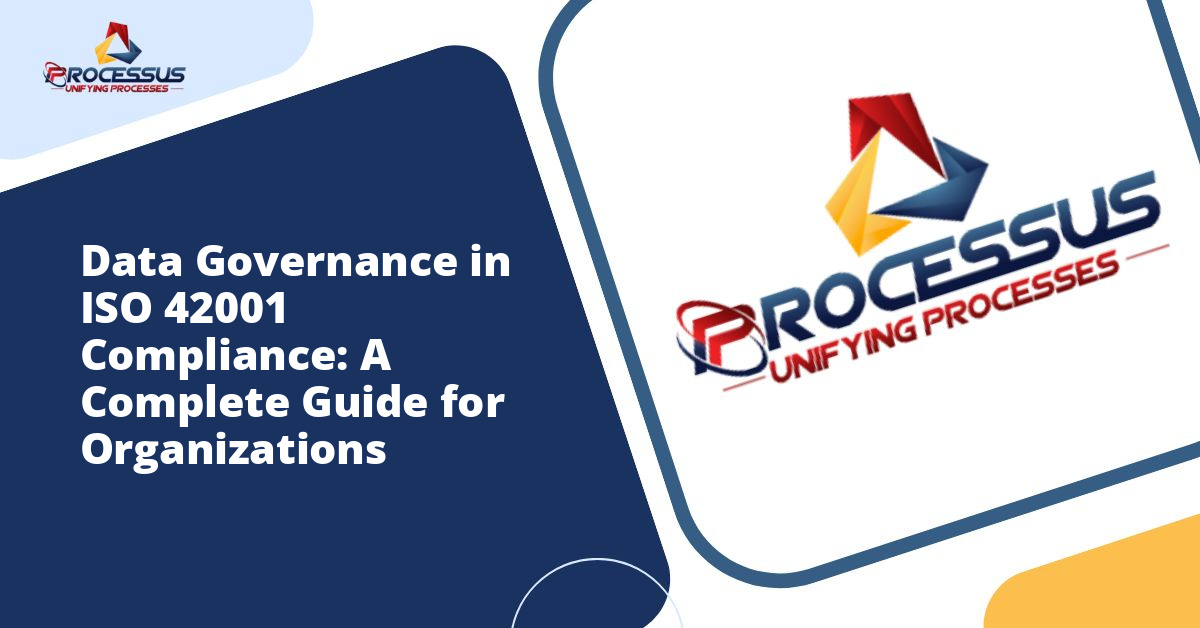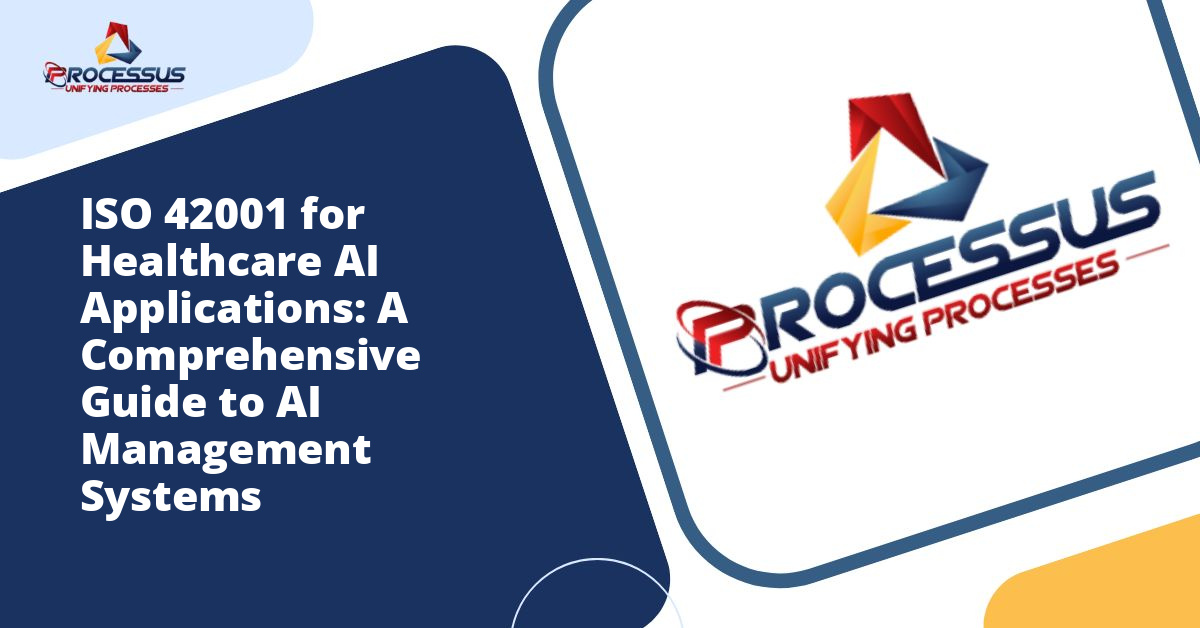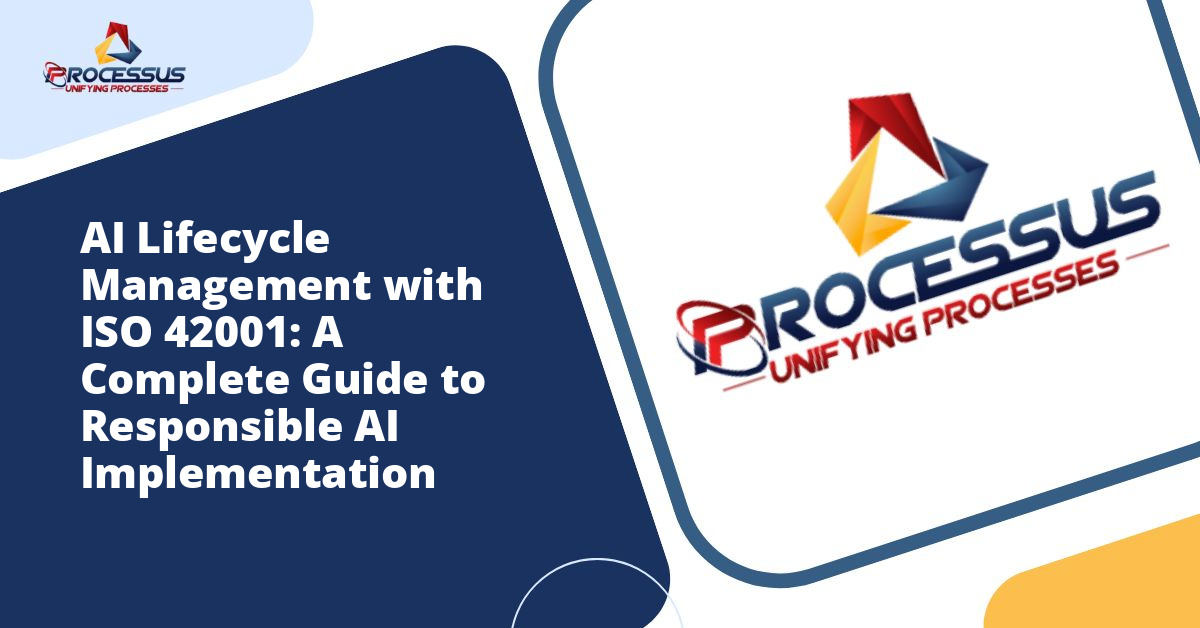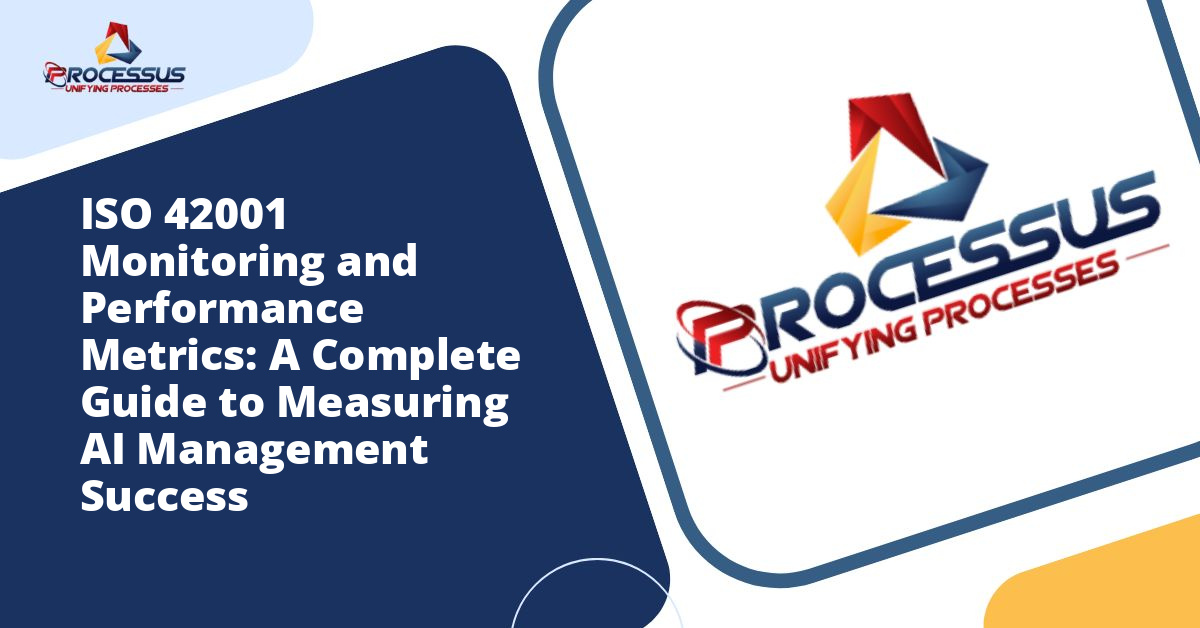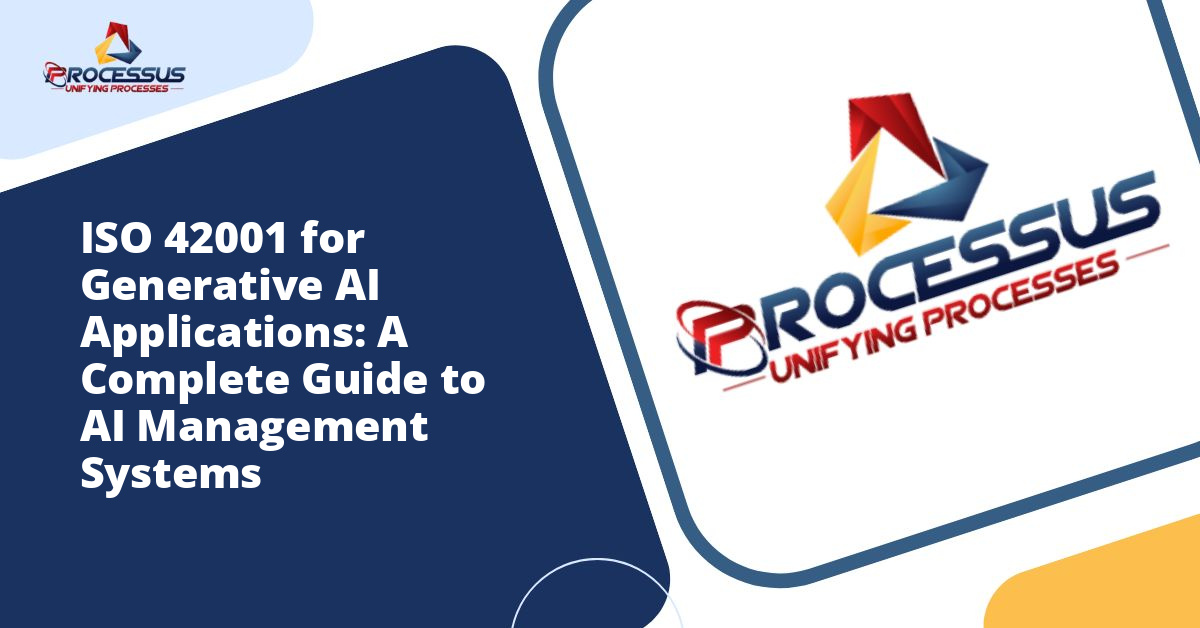The rapid advancement of artificial intelligence technologies has brought unprecedented opportunities and challenges to organizations worldwide. As AI systems become increasingly sophisticated and integrated into business operations, the need for robust governance frameworks has never been more critical. ISO 42001, the world’s first international standard for AI management systems, establishes comprehensive requirements for organizations developing, deploying, or using AI systems. At the heart of this standard lies data governance, a fundamental pillar that ensures AI systems operate ethically, transparently, and effectively.
Understanding the intersection between data governance and ISO 42001 compliance is essential for organizations seeking to harness AI’s potential while mitigating risks and maintaining stakeholder trust. This comprehensive guide explores the critical role of data governance within the ISO 42001 framework, providing practical insights for implementation and ongoing compliance. You might also enjoy reading about ISO 42001: The Essential Standard for Machine Learning Applications in 2024.
Understanding ISO 42001 and Its Significance
ISO 42001 represents a groundbreaking development in the standardization of AI management practices. Published in December 2023, this international standard provides a structured approach for organizations to develop, implement, and continuously improve their AI management systems. The standard addresses the unique challenges posed by AI technologies, including algorithmic bias, transparency concerns, data privacy issues, and ethical considerations. You might also enjoy reading about ISO 42001 Risk Management for AI Systems: A Comprehensive Guide to Responsible Artificial Intelligence.
Unlike traditional quality management standards, ISO 42001 specifically acknowledges the dynamic and evolving nature of AI systems. It requires organizations to establish comprehensive governance structures that can adapt to technological changes, regulatory updates, and emerging best practices. The standard applies to organizations of all sizes and sectors, whether they are developing AI solutions, deploying them internally, or providing AI-powered services to customers. You might also enjoy reading about Ethical AI: How ISO 42001 Addresses Bias and Fairness in Artificial Intelligence.
The importance of ISO 42001 extends beyond mere compliance. Organizations that adopt this standard demonstrate their commitment to responsible AI practices, which can enhance reputation, build customer trust, and create competitive advantages in an increasingly AI-driven marketplace. Furthermore, as regulatory frameworks around AI continue to evolve globally, ISO 42001 compliance positions organizations to meet emerging legal requirements more efficiently.
The Foundation of Data Governance in AI Systems
Data governance forms the cornerstone of effective AI management. In the context of ISO 42001, data governance encompasses the policies, procedures, standards, and metrics that ensure data assets supporting AI systems are managed appropriately throughout their lifecycle. This includes data acquisition, storage, processing, sharing, and disposal.
The quality and integrity of data directly impact AI system performance, reliability, and fairness. Poor data governance can lead to biased algorithms, inaccurate predictions, privacy violations, and regulatory non-compliance. Conversely, robust data governance practices enable organizations to develop AI systems that are trustworthy, explainable, and aligned with organizational values and stakeholder expectations.
Within the ISO 42001 framework, data governance must address several critical dimensions. These include data quality management, data security and privacy, data lineage and traceability, metadata management, and data lifecycle management. Each dimension requires careful attention to ensure AI systems operate as intended while respecting individual rights and societal values.
Key Data Governance Requirements in ISO 42001
Data Quality Management
ISO 42001 places significant emphasis on data quality as a prerequisite for reliable AI systems. Organizations must establish processes to assess and maintain data quality across multiple dimensions, including accuracy, completeness, consistency, timeliness, and relevance. This requires implementing data validation procedures, establishing quality metrics, and conducting regular data quality audits.
Data quality management begins at the point of collection. Organizations must ensure that data sources are reliable, representative, and appropriate for the intended AI application. This includes evaluating potential biases in data collection methods and taking corrective action when biases are identified. Additionally, organizations should implement automated data quality checks that can detect anomalies, inconsistencies, or degradation in data quality over time.
The standard also requires organizations to document data quality requirements for each AI system and establish thresholds below which data quality becomes unacceptable. When data quality falls below these thresholds, organizations must have procedures in place to investigate root causes, implement corrective actions, and potentially suspend AI system operations until quality is restored.
Data Privacy and Security
Protecting personal and sensitive data is paramount in ISO 42001 compliance. Organizations must implement comprehensive security controls to prevent unauthorized access, disclosure, modification, or destruction of data assets. This includes technical measures such as encryption, access controls, and network security, as well as organizational measures like security awareness training and incident response procedures.
Data privacy requirements extend beyond basic security measures. Organizations must ensure compliance with applicable data protection regulations, such as the General Data Protection Regulation (GDPR) in Europe or the California Consumer Privacy Act (CCPA) in the United States. This includes implementing privacy by design principles, conducting data protection impact assessments, and establishing processes for handling data subject rights requests.
The standard requires organizations to minimize data collection to what is strictly necessary for the AI system’s intended purpose. This principle of data minimization helps reduce privacy risks and simplifies compliance with data protection regulations. Organizations must also establish clear data retention policies and implement secure data disposal procedures when data is no longer needed.
Data Lineage and Traceability
Understanding the origin, transformation, and movement of data throughout AI system lifecycles is crucial for ISO 42001 compliance. Data lineage documentation enables organizations to trace data from its source through various processing stages to its ultimate use in AI models. This traceability is essential for identifying potential quality issues, investigating incidents, and demonstrating compliance with regulatory requirements.
Organizations must maintain comprehensive records of data sources, including information about data providers, collection methods, timestamps, and any licensing or usage restrictions. When data undergoes transformation or preprocessing, these operations must be documented with sufficient detail to enable reproducibility and verification. This documentation should include information about algorithms applied, parameters used, and any manual interventions performed.
Data lineage information proves particularly valuable when AI systems produce unexpected or problematic outputs. By tracing data backwards through the system, organizations can identify potential root causes and implement targeted corrective actions. Additionally, robust data lineage documentation facilitates regulatory compliance by enabling organizations to demonstrate how personal data has been processed and used.
Implementing Data Governance Frameworks for ISO 42001
Establishing Governance Structures
Effective data governance requires clear organizational structures with defined roles, responsibilities, and accountability. ISO 42001 expects organizations to establish governance bodies responsible for overseeing data management practices related to AI systems. This typically includes a data governance committee or board with representation from key stakeholder groups, including IT, legal, compliance, business units, and data science teams.
The governance structure should define specific roles such as data owners, data stewards, and data custodians. Data owners hold decision-making authority over specific data assets and are responsible for defining access policies and usage restrictions. Data stewards implement governance policies and ensure day-to-day compliance with data management standards. Data custodians handle the technical aspects of data storage, security, and availability.
Organizations must also establish clear escalation paths for addressing data governance issues. When conflicts arise between business objectives and governance requirements, or when novel situations emerge that existing policies do not address, the governance structure should provide mechanisms for timely resolution at appropriate organizational levels.
Developing Policies and Procedures
Comprehensive documentation of data governance policies and procedures is essential for ISO 42001 compliance. Organizations must develop written policies that address all aspects of data management relevant to AI systems. These policies should be accessible to all personnel involved in AI development, deployment, or operations and should be reviewed and updated regularly to reflect changing technologies, regulations, and organizational needs.
Key policy areas include data classification and handling, data access and sharing, data quality standards, privacy and security requirements, and data retention and disposal. Each policy should clearly articulate requirements, provide rationale for those requirements, and specify consequences for non-compliance. Policies should be written in clear, understandable language that avoids unnecessary technical jargon.
Complementing these policies, organizations must develop detailed procedures that provide step-by-step guidance for implementing policy requirements. Procedures should include practical examples, templates, and checklists that help personnel comply with governance requirements in their daily work. Regular training on policies and procedures ensures that all relevant personnel understand their responsibilities and can execute them effectively.
Technology and Tools
While processes and policies form the foundation of data governance, appropriate technology tools significantly enhance governance effectiveness and efficiency. ISO 42001 compliance often requires implementing specialized tools for data cataloging, metadata management, data quality monitoring, access control, and audit logging.
Data catalog tools provide centralized repositories of information about data assets, including descriptions, ownership, quality metrics, and usage restrictions. These tools enable data discovery, facilitate collaboration between teams, and support compliance with data documentation requirements. Modern data catalogs often incorporate artificial intelligence capabilities to automatically discover, classify, and tag data assets.
Data quality monitoring tools continuously assess data against defined quality metrics and alert stakeholders when quality issues arise. These tools can automate many quality checks that would be impractical to perform manually, enabling organizations to maintain high data quality standards at scale. Integration between quality monitoring tools and AI development platforms allows teams to identify and address quality issues before they impact AI system performance.
Challenges in Data Governance for AI Systems
Managing Data Complexity and Volume
AI systems often require vast amounts of data from diverse sources, creating significant governance challenges. Organizations must manage structured data from databases, unstructured data from documents and images, and streaming data from sensors and applications. Each data type presents unique governance requirements and technical challenges.
The sheer volume of data involved in AI systems can overwhelm traditional governance approaches. Manual data quality reviews and access approvals become impractical when dealing with millions or billions of data records. Organizations must leverage automation and implement scalable governance processes that can handle large data volumes without compromising governance effectiveness.
Additionally, AI systems frequently combine data from multiple sources, each with different quality characteristics, ownership arrangements, and usage restrictions. Reconciling these differences and ensuring consistent governance across all data sources requires careful coordination and robust data integration practices.
Addressing Bias and Fairness
Data bias represents one of the most significant challenges in AI governance. Historical biases present in training data can be learned and amplified by AI systems, leading to discriminatory outcomes. ISO 42001 requires organizations to actively identify and mitigate bias in data used for AI systems.
Detecting bias requires examining data from multiple perspectives and considering how different demographic groups are represented. Organizations must assess whether data accurately reflects the populations that AI systems will serve or whether certain groups are underrepresented or misrepresented. This analysis often requires collaboration between data scientists, domain experts, and representatives from affected communities.
When biases are identified, organizations must implement mitigation strategies. These may include collecting additional data to address underrepresentation, applying statistical techniques to rebalance datasets, or adjusting AI algorithms to account for known biases. However, bias mitigation is an ongoing process rather than a one-time fix, requiring continuous monitoring and adjustment as AI systems operate in real-world environments.
Ensuring Transparency and Explainability
ISO 42001 emphasizes the importance of transparency in AI systems, which has significant implications for data governance. Organizations must maintain detailed documentation about data used in AI systems to enable explainability and support accountability. This includes information about data sources, selection criteria, preprocessing steps, and any limitations or known biases.
However, achieving transparency while protecting proprietary information and personal privacy creates tensions that organizations must carefully navigate. Detailed data documentation might reveal sensitive business information or enable identification of individuals in supposedly anonymized datasets. Organizations must strike appropriate balances between transparency requirements and legitimate confidentiality needs.
Furthermore, technical complexity in AI systems can make it difficult to explain how specific data features influence AI outputs. Organizations must develop capabilities to trace AI decisions back through model architectures to underlying data, enabling meaningful explanations for stakeholders including regulators, customers, and affected individuals.
Best Practices for Sustainable Data Governance
Adopting a Risk-Based Approach
Not all data governance requirements need to be applied with equal rigor across all AI systems. ISO 42001 encourages organizations to adopt risk-based approaches that allocate governance resources based on the potential impact of AI systems. High-risk systems that make decisions affecting fundamental rights, safety, or significant financial interests warrant more stringent data governance controls than low-risk systems.
Organizations should conduct formal risk assessments for AI systems that consider both the likelihood and potential severity of data-related issues. These assessments should evaluate risks such as privacy violations, discrimination, safety incidents, and financial losses. The results of risk assessments should inform decisions about governance control intensity, review frequency, and resource allocation.
Risk-based approaches enable organizations to focus their governance efforts where they matter most while avoiding unnecessary bureaucracy for lower-risk applications. However, even low-risk systems require baseline governance controls to ensure data quality, security, and compliance with fundamental legal requirements.
Fostering a Data Governance Culture
Sustainable data governance extends beyond policies and procedures to encompass organizational culture. ISO 42001 compliance requires that data governance principles become embedded in how organizations think about and work with data. This cultural transformation involves leadership commitment, employee engagement, and ongoing communication about the importance of responsible data management.
Leaders must demonstrate their commitment to data governance through their actions and decisions. This includes allocating adequate resources for governance initiatives, recognizing and rewarding good governance practices, and addressing governance violations consistently. When leaders prioritize data governance, employees throughout the organization recognize its importance and are more likely to embrace governance requirements.
Organizations should also invest in building data literacy across their workforce. Employees need to understand not only the technical aspects of data management but also the ethical, legal, and social implications of data use in AI systems. Regular training, internal communications, and opportunities for dialogue about data governance challenges help build this understanding and create a culture where responsible data practices are valued.
Continuous Improvement and Adaptation
Data governance for AI systems cannot be treated as a one-time implementation project. The rapidly evolving nature of AI technologies, changing regulatory landscapes, and emerging best practices require organizations to continuously improve their governance frameworks. ISO 42001 explicitly requires organizations to establish processes for monitoring governance effectiveness and implementing improvements.
Regular audits and assessments help organizations identify governance gaps and opportunities for improvement. These reviews should evaluate both compliance with established policies and the effectiveness of those policies in achieving governance objectives. Organizations should collect metrics on data quality, security incidents, policy violations, and stakeholder satisfaction to inform improvement efforts.
Organizations must also stay informed about external developments that may affect their data governance requirements. This includes monitoring regulatory changes, industry standards evolution, academic research on AI ethics and fairness, and lessons learned from AI incidents at other organizations. Maintaining connections with industry groups, professional associations, and regulatory bodies helps organizations anticipate and prepare for future governance challenges.
Measuring Data Governance Success
Effective measurement is essential for demonstrating ISO 42001 compliance and driving continuous improvement in data governance. Organizations should establish key performance indicators (KPIs) that provide objective evidence of governance effectiveness. These metrics should be regularly collected, analyzed, and reported to governance bodies and senior leadership.
Data quality metrics might include accuracy rates, completeness percentages, timeliness measurements, and consistency scores. Security metrics could track incidents, access control violations, and vulnerability remediation times. Compliance metrics might measure policy adherence rates, training completion percentages, and audit findings. Organizations should establish targets for each metric and investigate when actual performance deviates significantly from expectations.
Beyond quantitative metrics, organizations should also gather qualitative feedback from stakeholders about their experiences with data governance processes. This feedback can reveal pain points, inefficiencies, and opportunities for improvement that metrics alone might not capture. Regular surveys, focus groups, and one-on-one interviews with data users, data scientists, and business leaders provide valuable insights for refining governance approaches.
Conclusion
Data governance represents a critical success factor for ISO 42001 compliance and responsible AI deployment. Organizations that invest in robust data governance frameworks position themselves to harness AI’s potential while managing risks, maintaining stakeholder trust, and meeting regulatory obligations. The journey toward effective data governance requires commitment, resources, and persistence, but the benefits extend far beyond compliance to encompass improved decision-making, enhanced innovation capabilities, and stronger competitive positioning.
As AI technologies continue to evolve and become more deeply integrated into organizational operations, the importance of data governance will only increase. Organizations that establish strong governance foundations today will be better prepared to adapt to future challenges and opportunities. By treating data governance not as a compliance burden but as a strategic enabler, organizations can build AI systems that are not only powerful and efficient but also trustworthy, fair, and aligned with human values.
The path to ISO 42001 compliance through effective data governance is neither simple nor static. It requires ongoing attention, continuous learning, and willingness to adapt as circumstances change. However, organizations that embrace this challenge will find themselves well-positioned to lead in an increasingly AI-driven world, delivering value to stakeholders while upholding the highest standards of responsibility and ethics.

